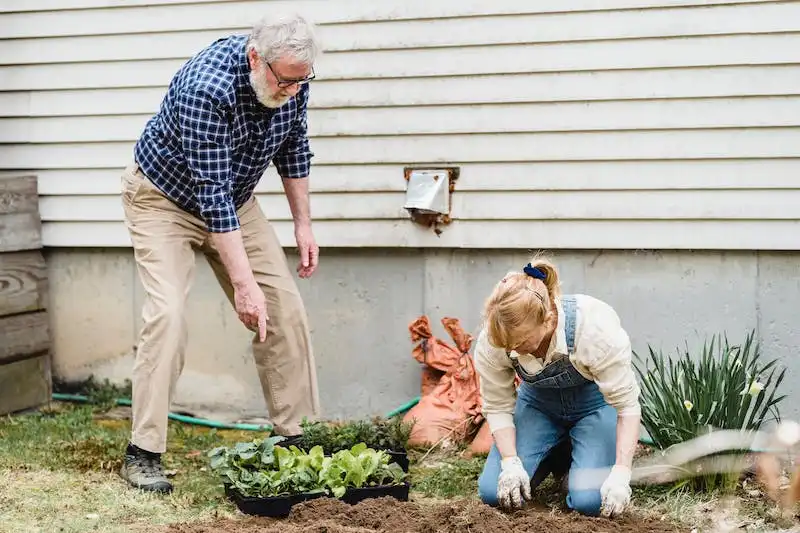Cranberry plants are a major crop in many parts of the world. Whether you are planting them for their fruits or for their landscaping value, cranberry plants have a lot to offer. Cranberries are related to blueberries, and they grow on low, spreading vines in acidic soils.
One of the major benefits of cranberry plants is their ability to thrive in wet, marshy areas. Cranberries are often grown in bogs, where they are planted in holes dug into the ground. These plants require a lot of moisture and a well-drained soil in order to grow and produce healthy crops.
The planting process for cranberry plants involves spacing them about 12 to 18 inches apart. This spacing allows for proper air circulation and reduces the risk of diseases. In terms of care, cranberry plants require regular watering and fertilizer application. They also need to be pruned in order to maintain their health and shape.
When it comes to location, cranberry plants prefer temperate climates and can withstand cold winters. They are primarily grown in the United States, with major cranberry-producing states including Massachusetts, Wisconsin, and New Jersey. The origin of cranberries can be traced back to North America, where Native Americans used them for various purposes.
Cranberries have a variety of uses, both in the kitchen and beyond. They are commonly used in the production of juices, sauces, and dried fruits. Cranberries are also popular in landscape design, as their vibrant red color adds an attractive element to garden settings.
If you’re interested in learning more about cranberry plants, there are several resources available online. Websites like PlantVillage and the USDA provide information on cranberry planting, care, diseases, and harvesting. You can also find articles and videos on gardening sites that offer tips and advice on growing cranberries in your own garden.
In conclusion, cranberry plants are a valuable addition to any garden or landscape. Their ability to thrive in wet, acidic soils and withstand cold winters makes them a resilient and rewarding plant to grow. Whether you’re a seasoned gardener or a beginner, cranberry plants can provide a beautiful and fruitful addition to your outdoor space.
How to Plant, Grow, and Harvest Cranberry Plants
Cranberry plants, classified under the genus Vaccinium, are native to North America and are widely known for their tart and flavorful berries. These plants are typically found in the northeastern part of the United States and are cultivated for their commercial use as well as for home gardens and landscapes.
When planning to grow cranberry plants, it is important to understand their specific requirements in terms of soil, water, and care. Cranberry plants thrive in acidic, well-drained soil with a pH of 4.0 to 5.5. They can be planted in various types of soil, including naturally acidic or soil that has been acidified through the addition of organic matter such as peat moss or sawdust.
The planting season for cranberries usually begins in the spring or early summer, as they require a long growing season of about six to seven months. They can be purchased from specialized cranberry nurseries or acquired through online sources. Cranberry plants are typically sold as vines or rooted cuttings.
Before planting, prepare the soil by removing any weeds, stones, or debris. Cranberry plants should be placed in trenches or elevated beds to improve drainage. The trenches should have a depth of about 4 to 8 inches, depending on the soil type and drainage requirements. The plants should be spaced about 12 to 18 inches apart to allow them to grow and spread properly.
Once planted, cranberry plants require regular watering to keep the soil moist. It is important to avoid overwatering, as cranberries have shallow roots and excessive moisture can lead to diseases such as fruitworms or viruses. The plants also benefit from a layer of mulch to conserve moisture and suppress weed growth.
In terms of fertilization, cranberries have low nutrient requirements. A balanced fertilizer can be applied in small quantities, following the recommendations of soil testing or cranberry-specific cultivation guidelines. Avoid using excessive fertilizer, as it can lead to excessive vine growth and poor fruit development.
During the growing season, cranberry plants may require some pruning to control the growth and maintain the desired shape. Prune any dead or yellowing vines, as well as any broadleaf weeds that may compete with the cranberry plants for nutrients and sunlight.
Pollination is also an important aspect of cranberry plant cultivation. Cranberry plants produce small flowers that require pollination to develop into berries. For commercial growers, honeybees are often used to aid in pollination. In home gardens, encouraging native bees to visit the flowers can help with pollination.
Harvesting cranberries typically occurs in the fall, about six to seven months after planting. Cranberries are usually harvested using special equipment or by flooding the fields and using mechanical tools to separate the berries from the vines.
Cranberries have been a popular fruit for centuries and have been valued for their health benefits and culinary uses. They are a rich source of antioxidants and vitamins, and their vibrant red color adds a festive touch to any dish. Whether you are a commercial grower or a hobby gardener, growing cranberry plants can be a rewarding experience.
With the right care and attention to their specific requirements, cranberry plants can thrive and produce delicious berries that can be enjoyed in various recipes in the kitchen.
So, if you are looking to add a unique and colorful plant to your garden or landscape, consider growing cranberry plants. They not only provide beauty and visual appeal but also offer a delicious and nutritious addition to your kitchen.
Sources: [editors, encyclopedias, plantvillage]
Best climate and site for growing cranberries
When it comes to growing cranberries, the right climate and site selection are crucial for successful cultivation. Cranberries require specific growing conditions and careful attention to ensure healthy and productive plants.
The first step in growing cranberries is to choose the right variety or species. There are several varieties available, but the most common is Vaccinium macrocarpon. This species needs acidic soil with a pH of around 4.5 to 5.5.
Cranberries thrive in areas with cool summers and cold winters, making them well-suited for cultivation in the northeastern United States. The ideal location should receive full sun exposure, as cranberries require at least six hours of direct sunlight per day.
Furthermore, cranberries need a consistent source of water, as they grow best in wet or waterlogged conditions. Peaty, sandy soil is ideal for cranberries, as it has good drainage and moisture retention. Effort should be made to keep the site weed-free, as weeds can compete for resources and hinder cranberry growth.
Cranberries can be grown in containers, but they require special care and attention. The container needs to have drainage holes and should be filled with a mixture of peat moss and sand. Regular watering is essential to maintain the moisture levels required by cranberries.
In terms of feeding, cranberries have specific nutrient requirements. A balanced fertilizer with a high phosphorus content is important for cranberry plants. It is recommended to follow the guidelines provided by your local agricultural extension service or consult a horticulturist for specific fertilizer recommendations.
Pests and diseases can also affect cranberry plants. Some common pests include fruitworms, cranberry weevils, and cranberry tipworms. Regular monitoring and proper pest management can help control these pests and prevent damage to the plants and fruits.
Proper pollination is necessary for cranberries to produce fruit. Cranberry flowers are pollinated by bees, such as Andrena bees, so it is important to provide a habitat that attracts these pollinators.
Harvesting cranberries requires careful monitoring of fruit ripeness. Cranberries are ready to be harvested when they have reached their desired color and have a firm texture. The acidity of the fruit can be tested by crushing a few cranberries and measuring the pH of the juice.
In summary, the best climate and site for growing cranberries include a cool climate with cold winters, full sun exposure, acidic soil with good drainage, and consistent moisture. Care should be taken to manage pests and diseases, provide proper pollination, and follow proper harvesting techniques. With the right location and care, cranberries can be a valuable addition to any garden or landscape.
For more information on growing cranberries, you can visit websites like PlantVillage and the United States Department of Agriculture (USDA), which provide detailed descriptions and cultivation tips.
Cranberry pollination
When it comes to cranberry pollination, there are several key factors to consider. Cranberries grow in low-growing plants that are native to temperate regions of North America, including parts of Europe. These plants thrive in wet areas, and their growth is highly dependent on water availability.
Pollination of cranberry plants is primarily done by bees. European honeybees are typically used in cranberry fields to ensure optimal pollination. Bees are attracted to the flowers of cranberry plants due to the light and airy structure of the flowers. They transfer pollen from the male flowers to the female flowers, allowing for fruit production.
Cranberry fruits are typically larger than the flowers and are ready for harvest after several months of growth. The fruits are juicy and have a bright red color, making them visually appealing and desirable to consumers.
In order to ensure proper pollination, cranberry plants need to be grown in areas that provide the necessary conditions for bees to thrive. This includes having access to a water source and being protected from frost and pests. Cranberry plants require acidic soil and can grow in areas with a pH between 4 and 5.5.
When planning a cranberry field, it is important to select a site that provides the optimal conditions for pollination. This includes choosing an area with a good water supply, as cranberry plants need constant moisture to grow and produce fruit. It is also important to consider the climate of the region, as cranberries are best suited for temperate regions.
In order to promote healthy pollination, cranberry plants should be regularly pruned and maintained. Pruning helps to create a more open canopy, allowing for better air circulation and sunlight penetration. This can also help to reduce the risk of disease and pests.
Cranberry plants can be susceptible to a range of pests and diseases. Some common pests include fruitworms, cranberry weevils, and cranberry fruit flies. These pests can damage the plants and reduce fruit yield. Regular monitoring and preventive measures can help to control these pests and protect the cranberry crop.
In addition to pests, cranberry plants can also be affected by viruses. Viral infections can cause stunted growth, yellowing of the leaves, and reduced fruit production. Virus-infected plants should be removed and destroyed to prevent the spread of the disease to healthy plants.
When it comes to fertilizing cranberry plants, it is important to follow a regular schedule and use the appropriate materials. Cranberries require fertilizers that are high in nitrogen and low in phosphorus. The timing and amount of fertilizer application will vary depending on the specific needs of the plants.
In conclusion, cranberry pollination is a vital process for the successful growth and production of cranberries. By understanding the needs of cranberry plants and following proper cultivation practices, farmers can ensure healthy pollination and a bountiful cranberry harvest.




